Review of mechanical characteristics and properties of braces
(F. Barral, CPO, DIU d’appareillage du rachis, Scientific committe group Proteor-Lecante, University Lyon I,University J.Monnet, Saint-Etienne)
FOREWORD: Why this review?
✓ There is a wide variety of braces around the world, each team developing their own technique from available means and materials.
The mistake has long been to want to treat each scoliosis with the same type of brace. This created partisan discussions and “parochial disputes”. Today, the association of different methods increases the chances of successful treatment.
✓ Old designed braces are still used today, for their specific properties. No pre-eminence of a « champion » that would have made them
outdated.
✓ The SOSORT classification only knows those that have been the subject of scientific papers (Scoliosis). For example, the Garchois brace, the 3D from Saint-Etienne, the 4 points, are not known.
✓ The main indicator of good results, Cobb angle, is set to change because obsolete and unsuitable.
✓ The existence of schools (Lyon, Chêneau, etc…) is essential for teaching, as learning this job is complex, without a real reference book for CPO. The practical aspect is very important but rarely complete, and reaching an expert-level takes many years of practice.
✓ One important subject has to be treated: remuneration and ethics.
1. State of the art: the different braces, in 4 groups
a. Plaster brace E.D.F. (Elongation, Dérotation, Flexion)

b. Adjustable braces

c. Monoshell braces :

d. Mixed braces :

2. REMINDER : Treatment action objectives
Hueter-Volkmann law :
- nucleus refocusing

-Ligamentous creep : according to some authors, only permanent traction for 3 weeks allows permanent modification of ligaments length
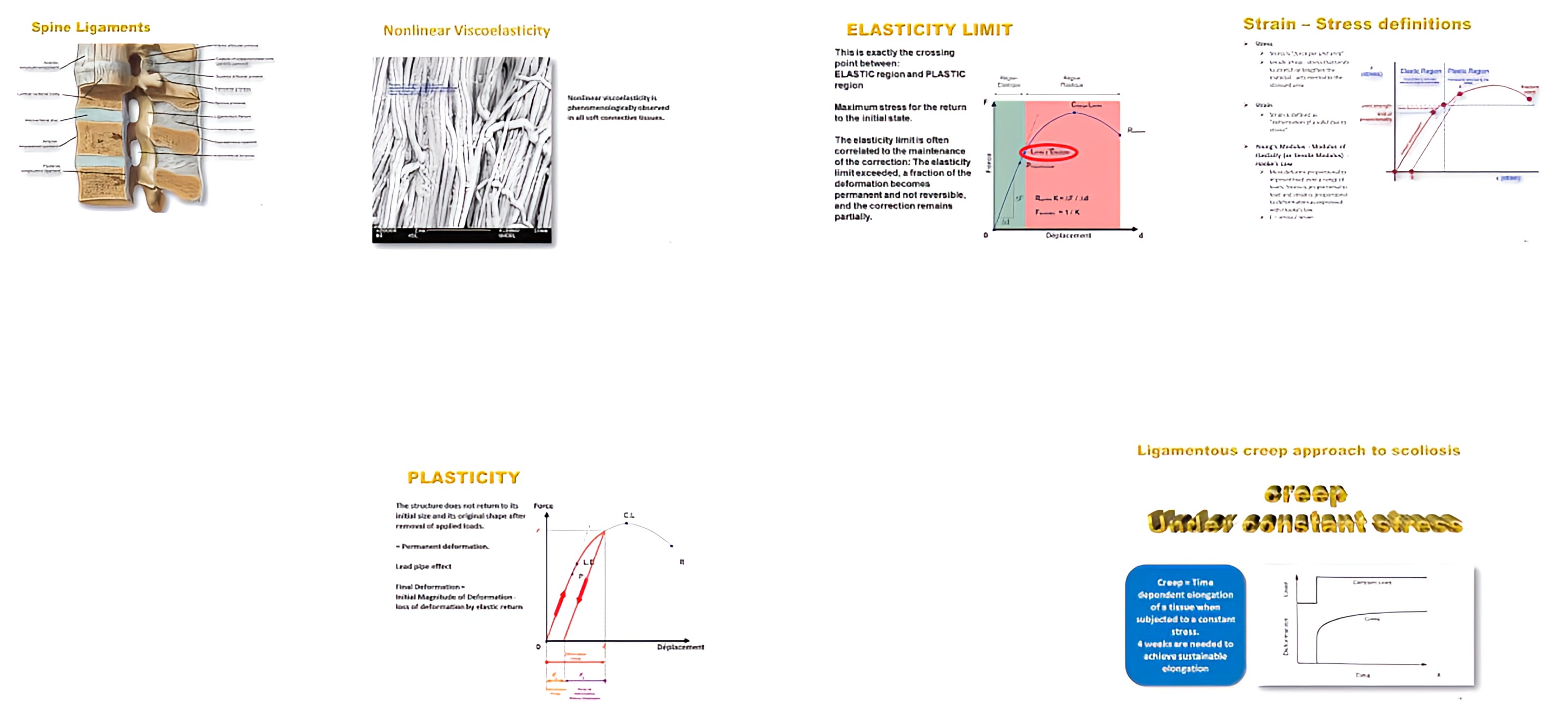
-Coupled movements : Harrison Fryette (1918)+ Panjabi
3. PROPERTIES and MECHANICAL ACTIONS of ORTHESES : external actions – internal effects
3.1 Active or passive axial distraction
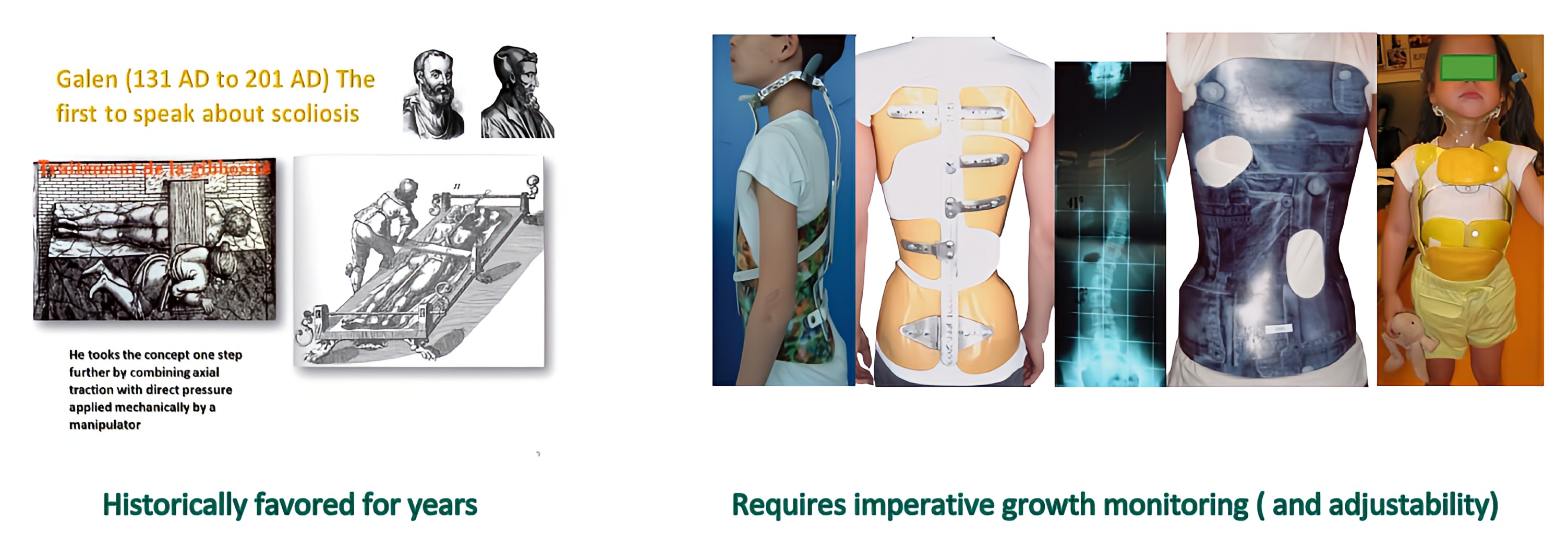
3.2 Segmental translation ( progressivity if settings) :
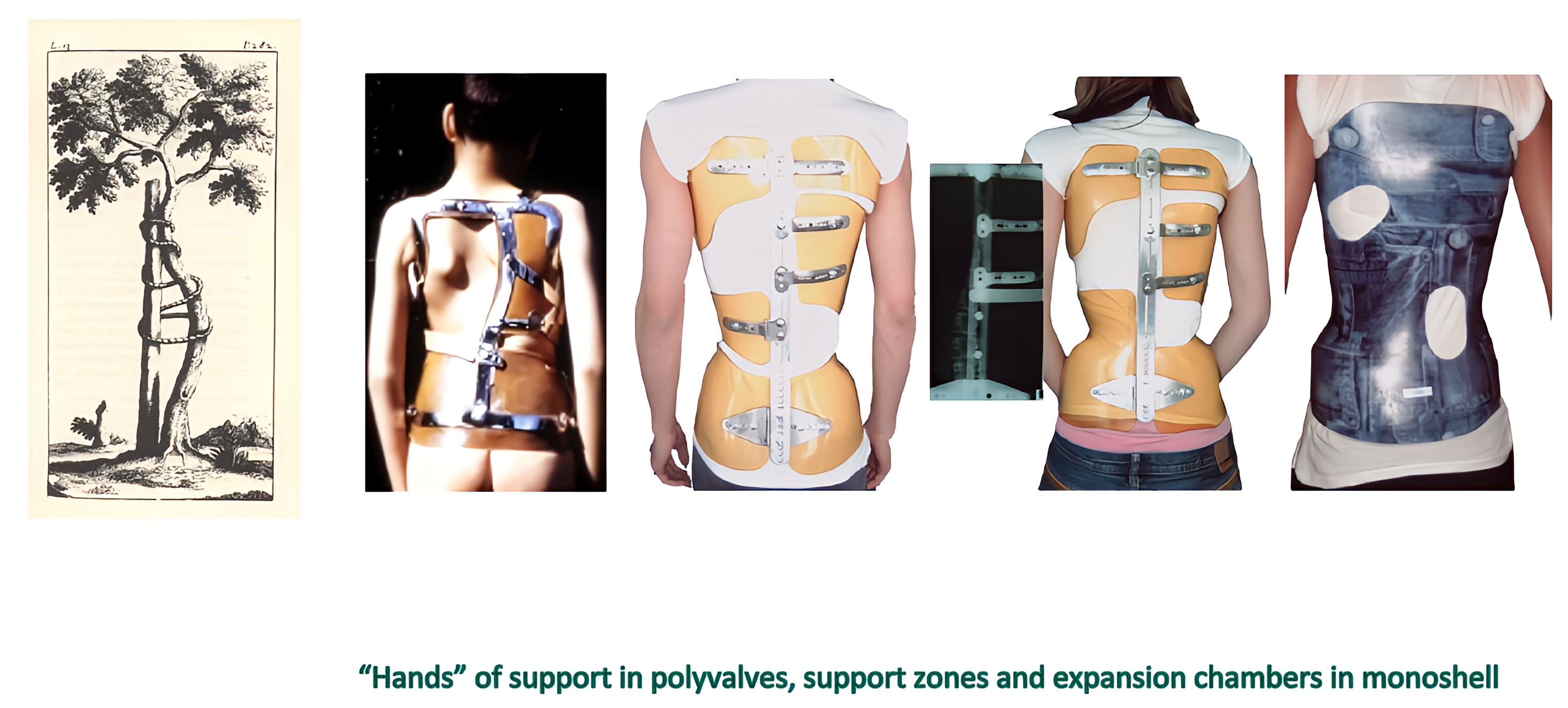
3.3 Lumbar level : shift + lordosis = derotation

3.4 Opening the ilio-lumbar angle
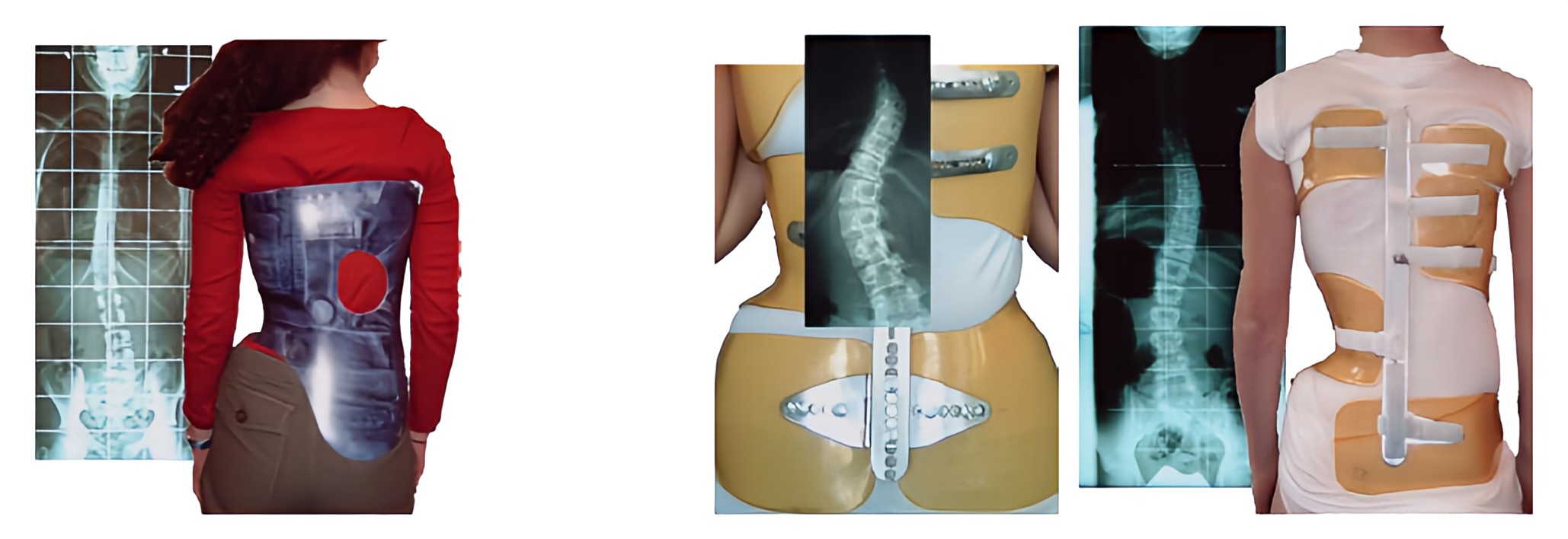
3.5 Thoracic level, hump modeling
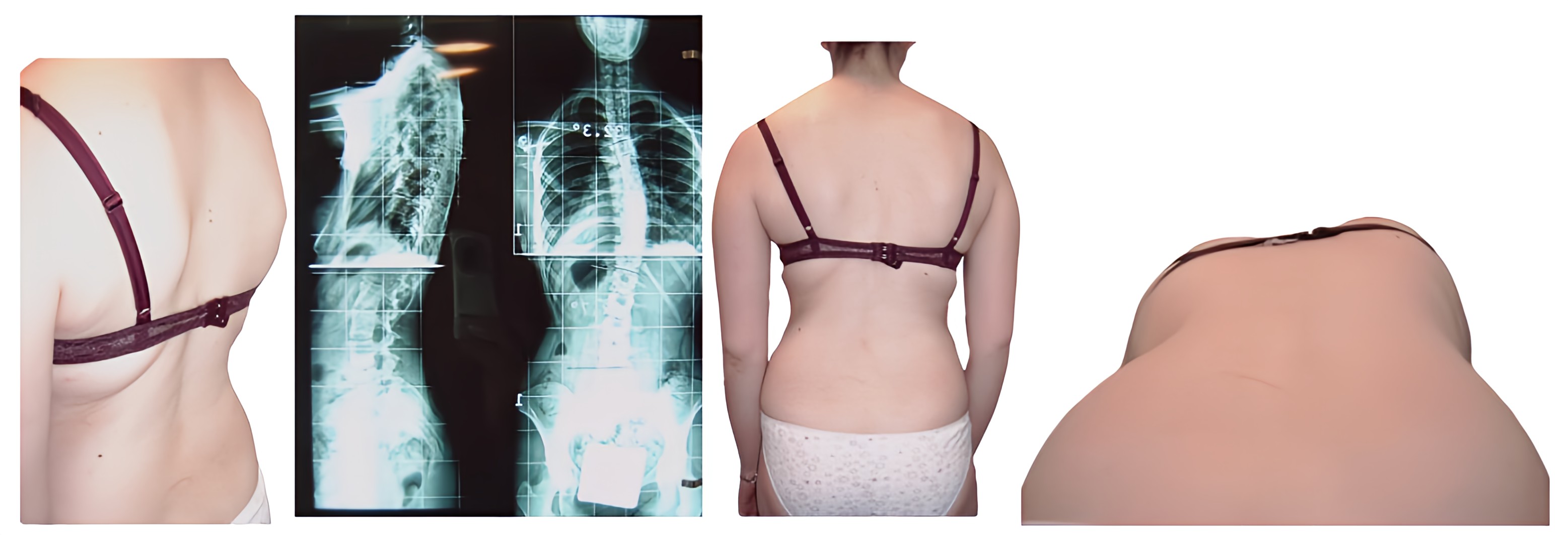
3.6 Kyphosis research
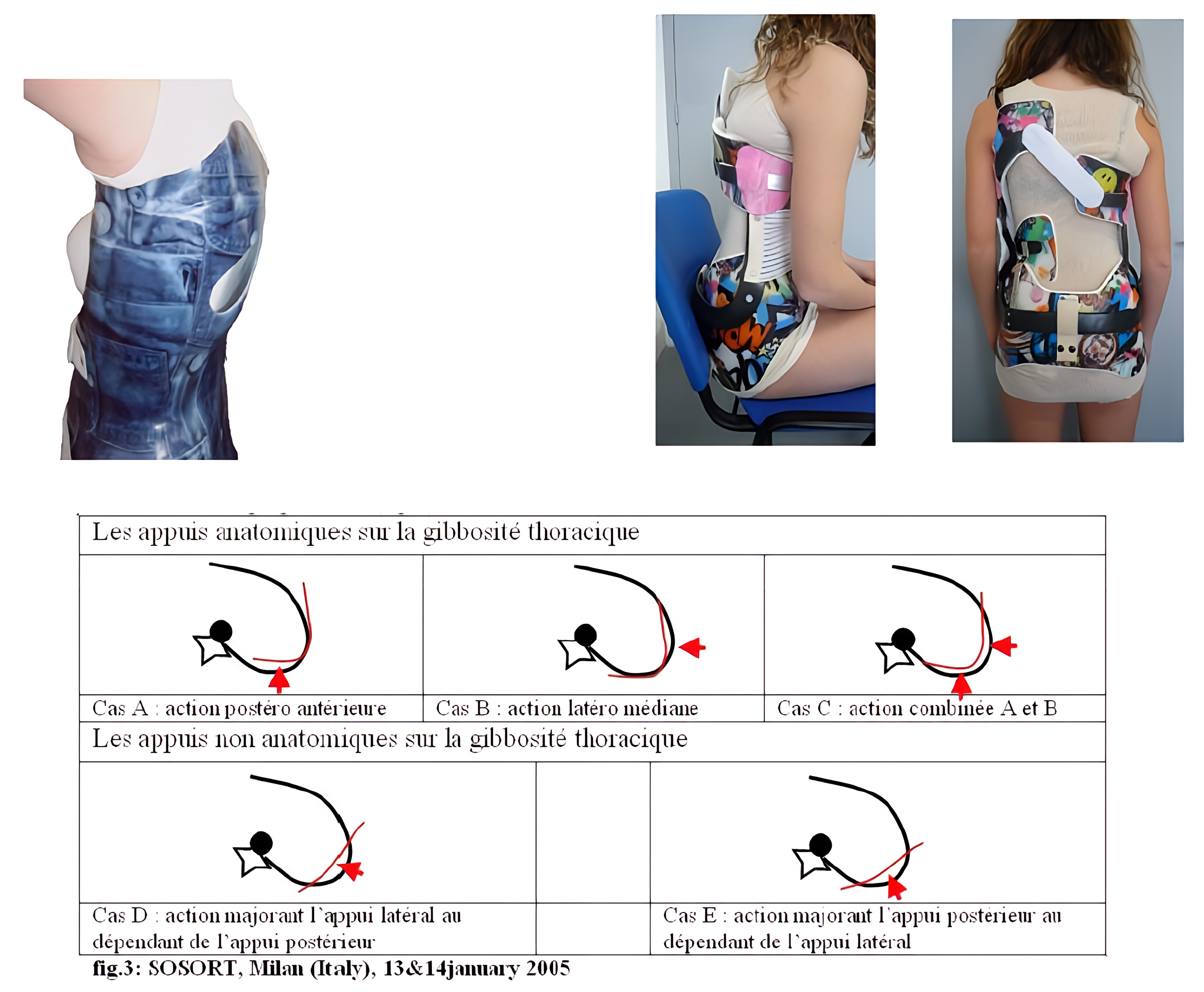
3.7 Bendings
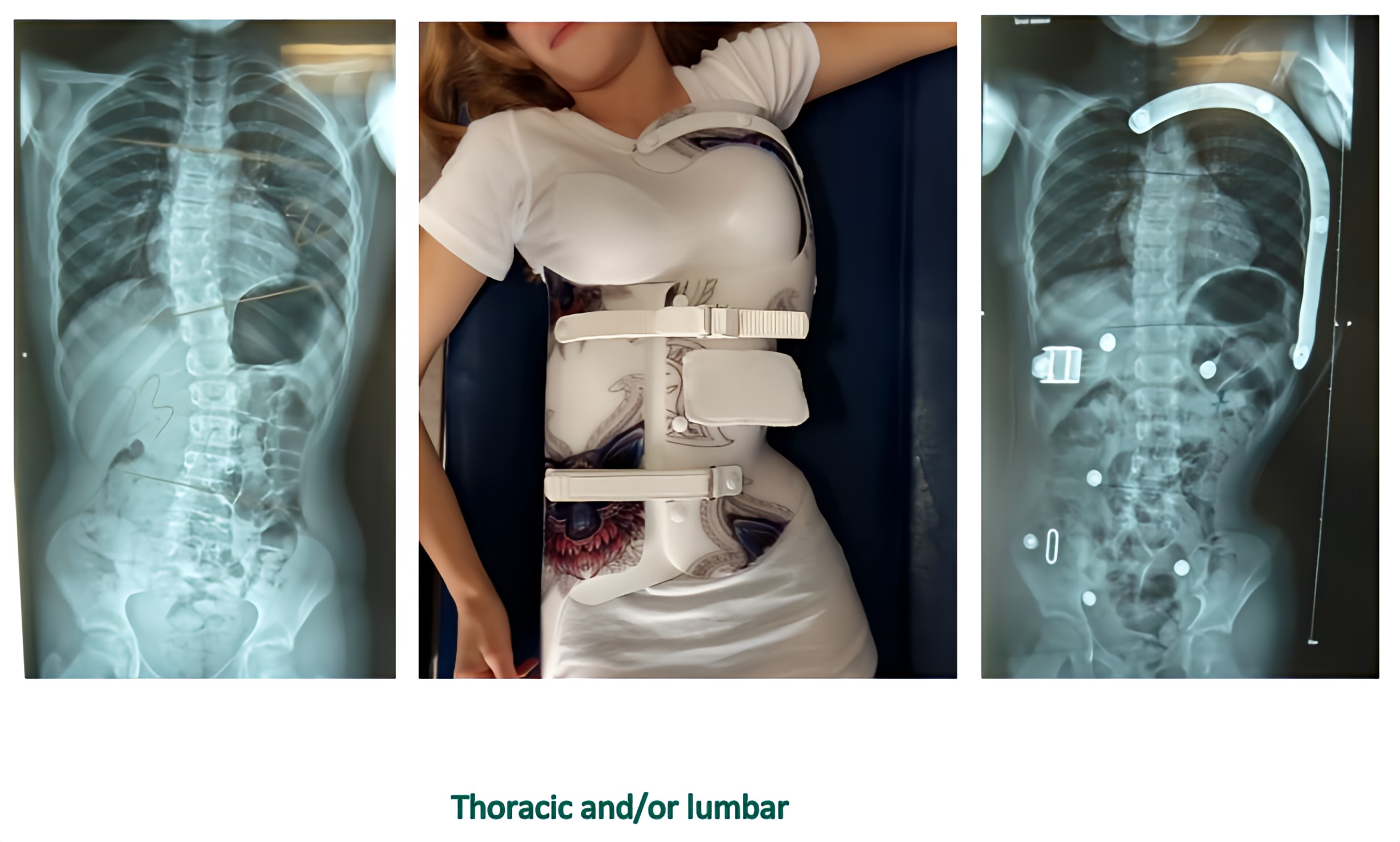
3.8 Re-balancing by asymmetric cutlines
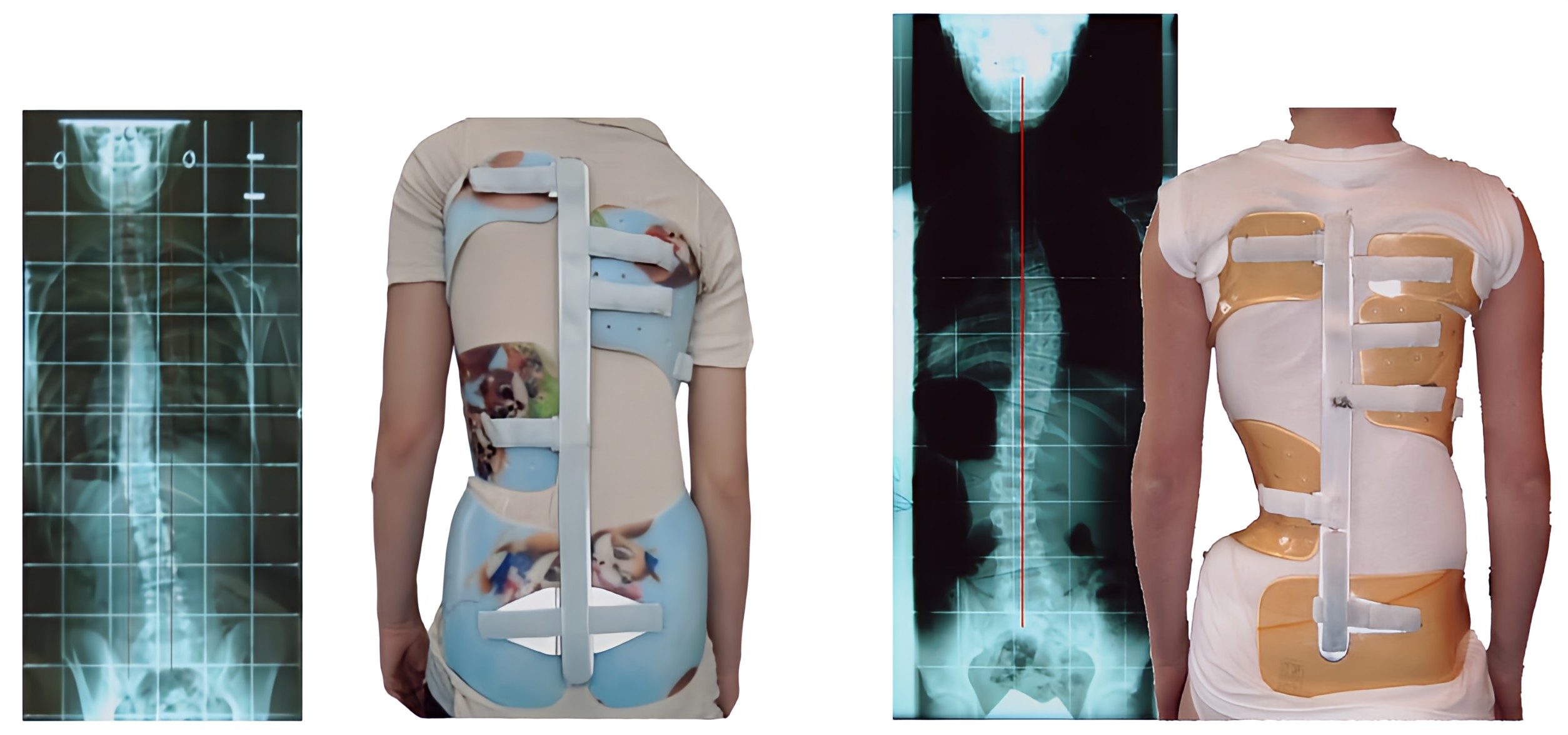
3.9 Positional re-balancing (postural part of the curves)

3.10 Segmental twist + high rigidity + axial distraction (baby lift)
The different levels can untwist while sliding inside, thanks to the material and the interface.
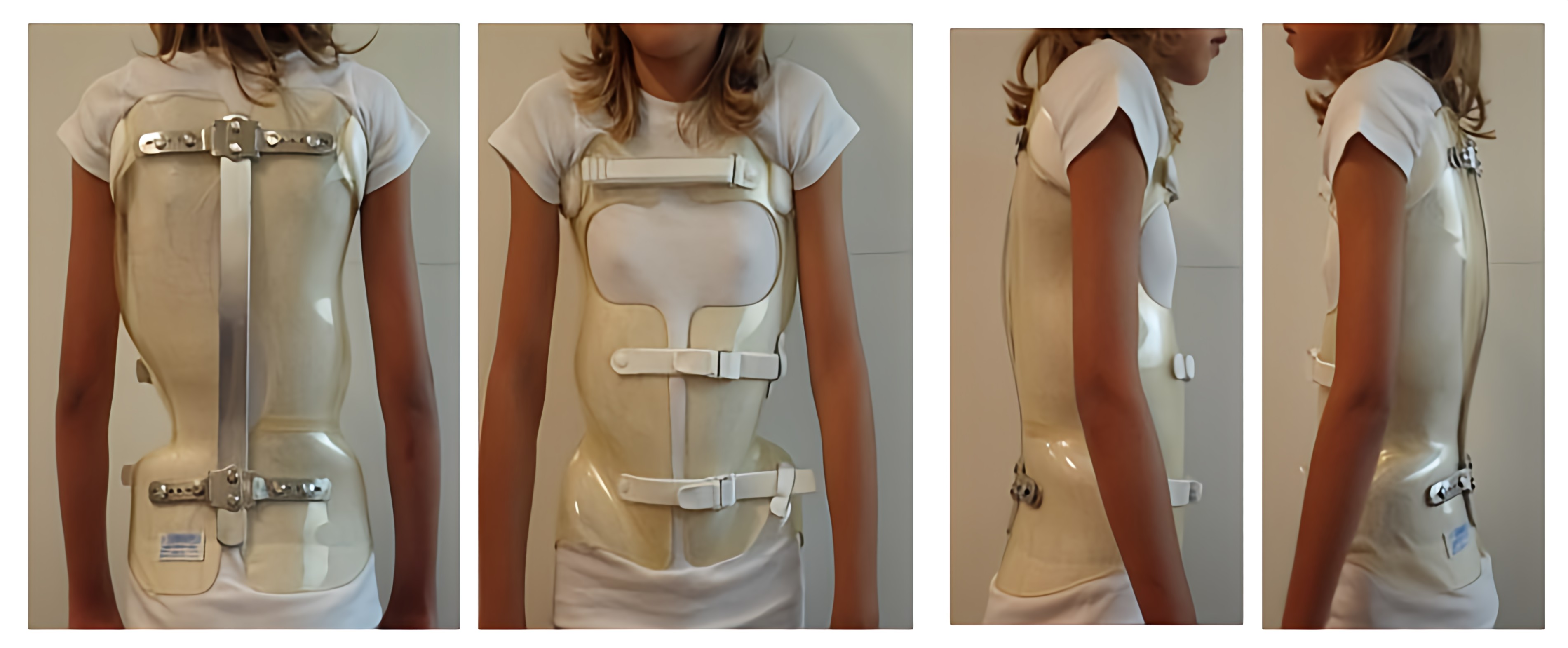
3.11 Respect of vital capacity and thoracic growth
Rigid supports of the Lyonbrace become dynamic, thanks to carbon blades, and still ajustable.

3.12 Comfort (no child will accepts to wear a brace that hurts)
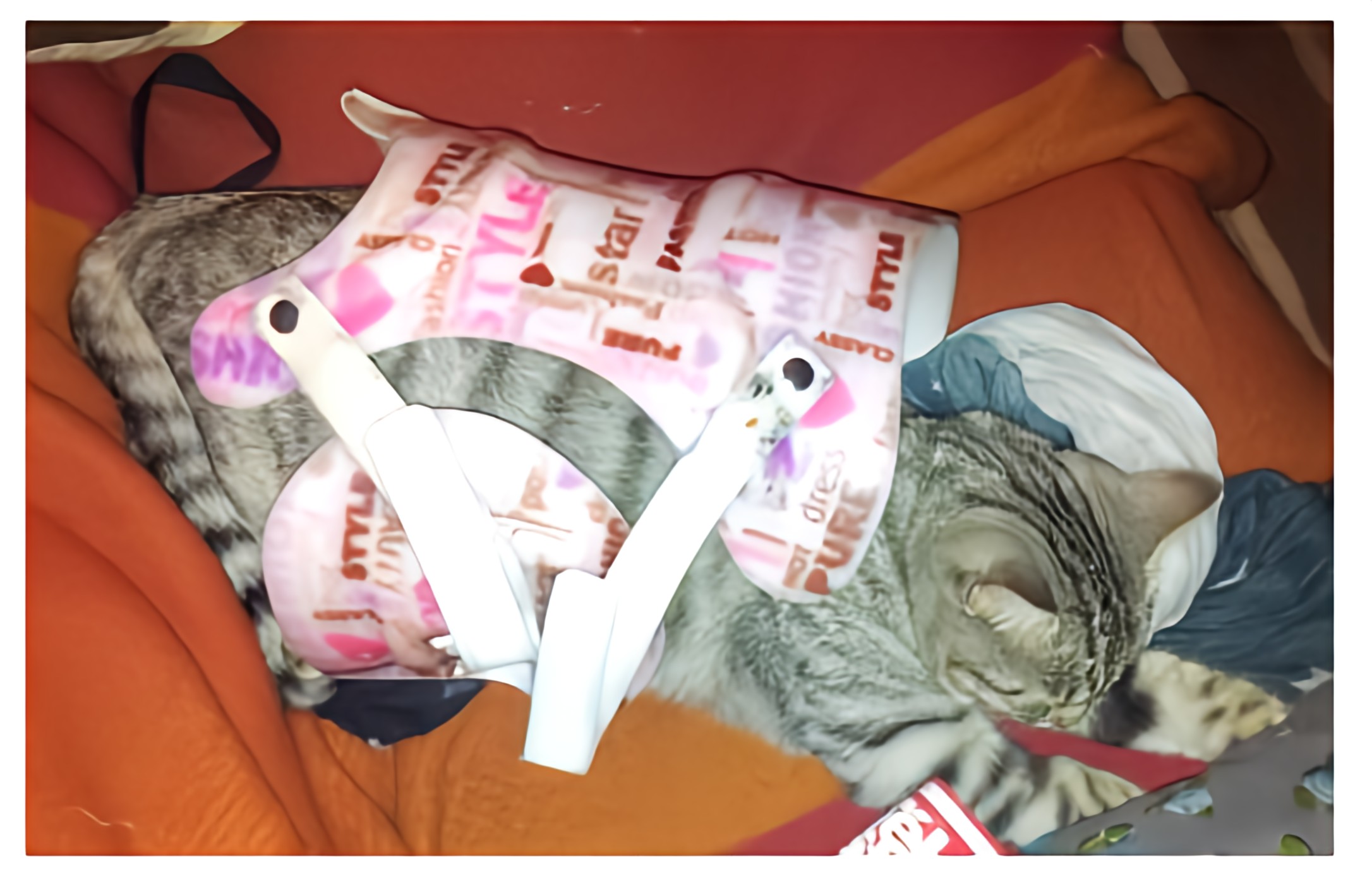
3.13 Aesthetic : the ability to choose improves appropriation
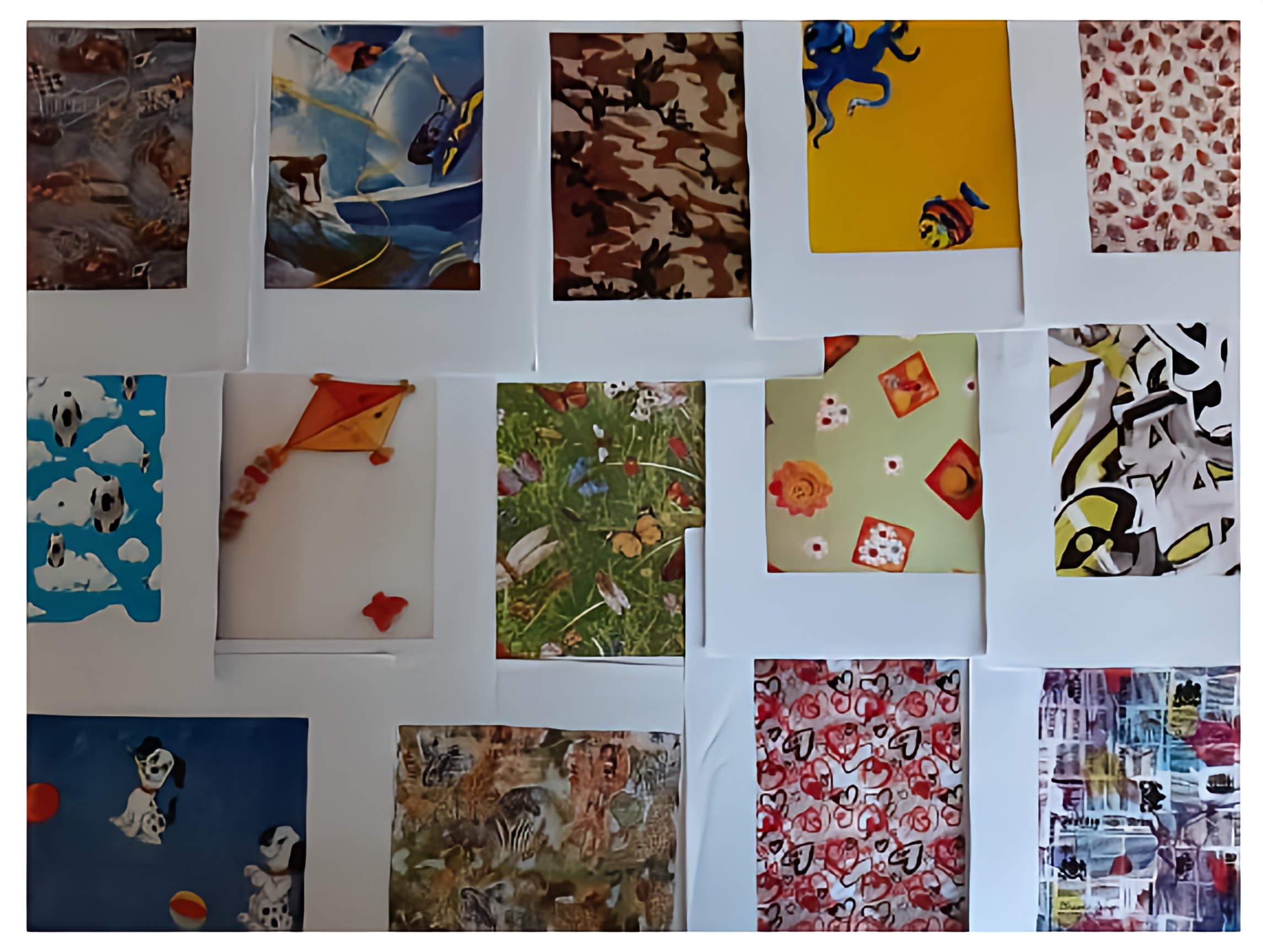
EACH OF THESE PROPERTIES MAY BE NECESSARY
NO BRACE HAS ALL THESE PROPERTIES
4. IN PRACTICE : from assessment to orthesis
✓ Age (infantiles, juveniles, adolescents)
✓ Clinical aspect: humps, imbalances, oblical departures, etc…
✓ Topographic localisation of the curves
✓ Importance of the curvature (Cobb)
✓ Rigidity vs reductibility
✓ Sagittal plane (flat back)
✓ Complications ( neurological, cardio-respiratory, connective disorders, obesity, etc…)
✓ Psychological aspects (acceptance, appropriation). Compliance.

5. DISCUSSION :
Limits may exist : economic, technical, know-how. Not everyone has access to the most sophisticated tools.
« Schools » are necessary to learn, but often dogmatic and therefore limiting : should we still make Milwaukee braces with leather belts today to remain faithfull to W.Blount and claim his good results, statistically significant ?
Cobb angle is today unsuitable and outdated. The “top view” will be a better tool in the future.
Limits of conservative orthopédic treatment : for example here, very little internal effect (Ehlers – Danlos syndrome)

What fair remuneration for our braces ?
Do we have to validate and pay for this useless work ?
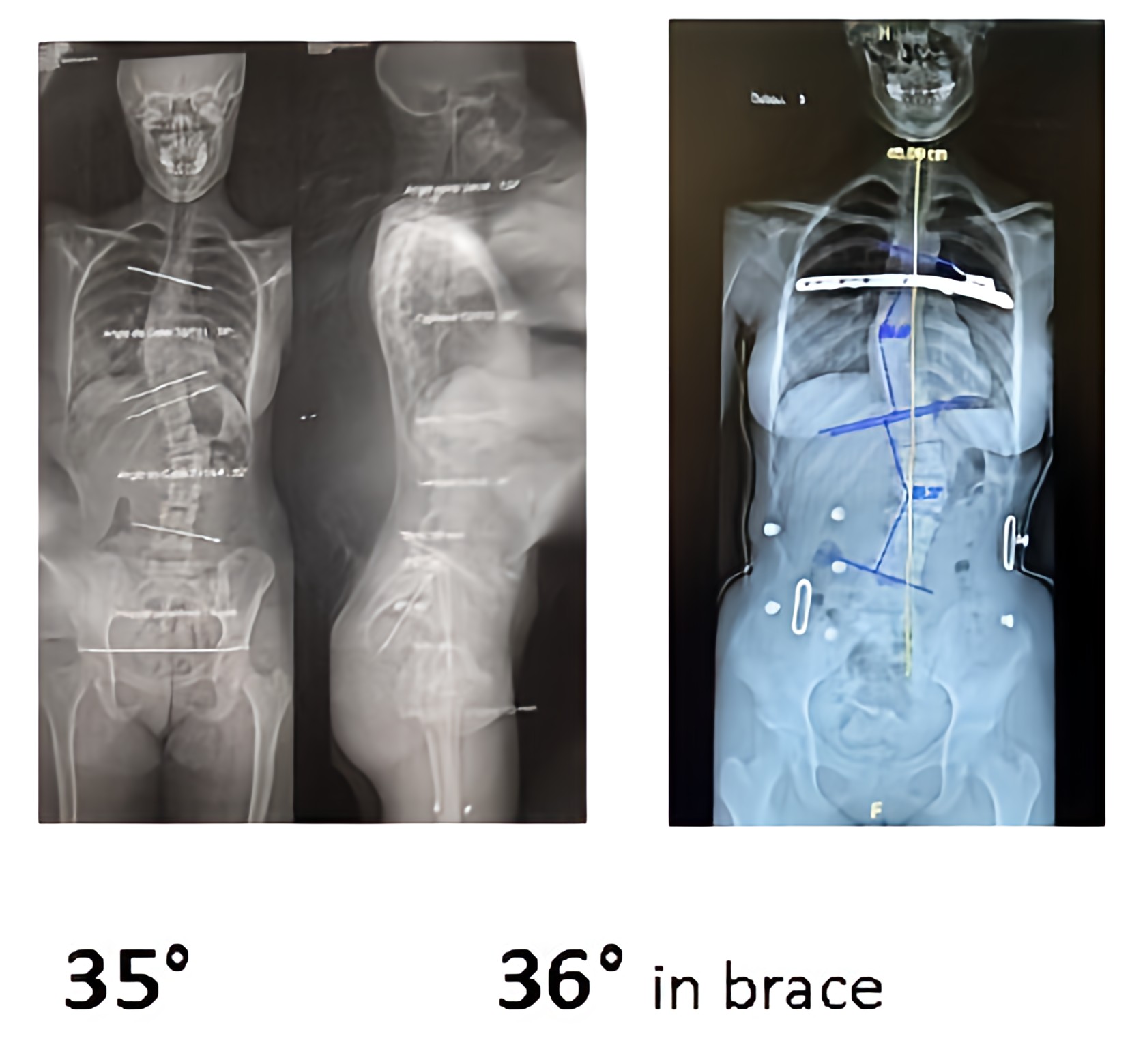
Or this one, increasing flat back ?
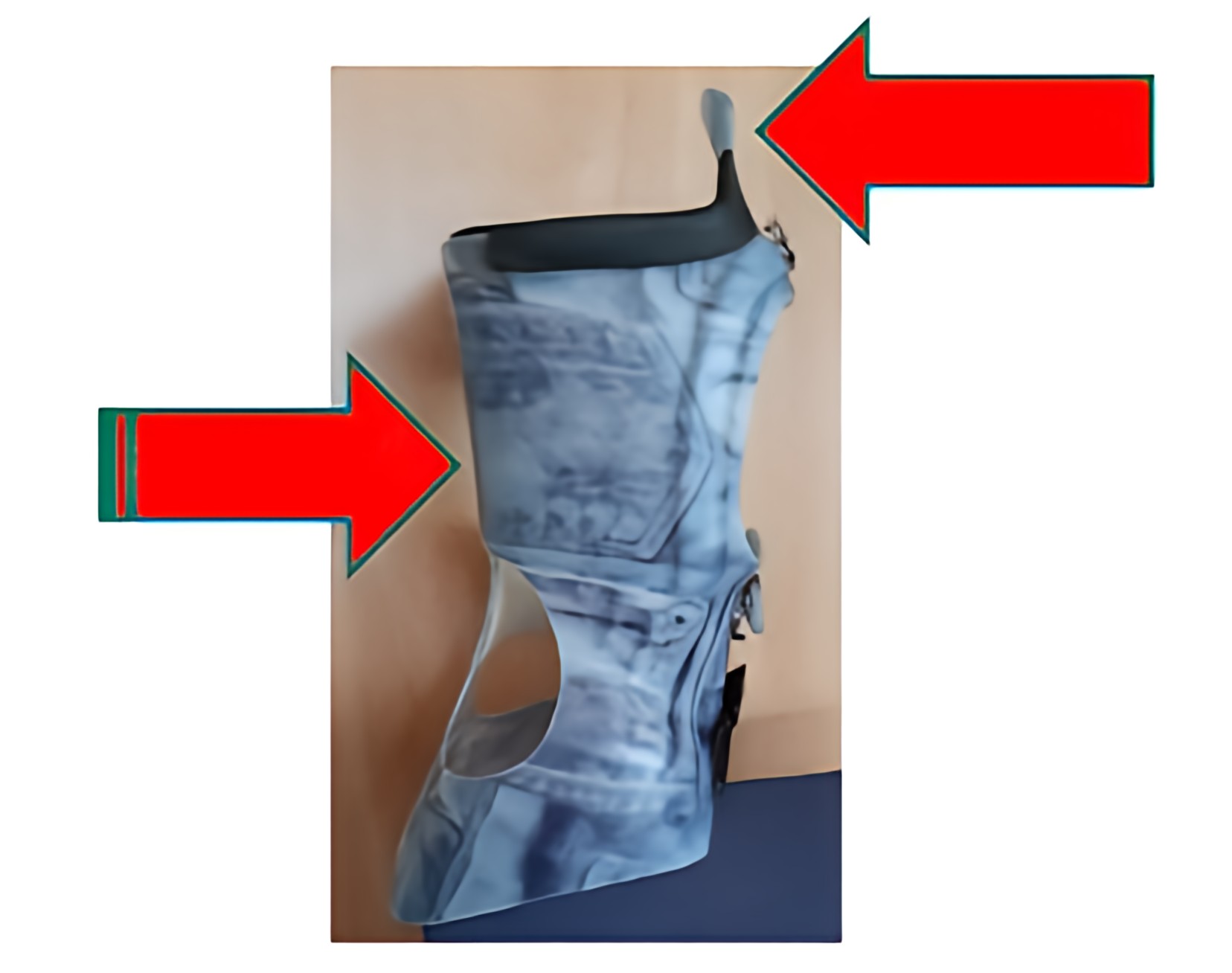
Regulation is essential.
6. CONCLUSION
The specific characteristics of each brace can be referenced. We could imagine a few basic braces, with an arsenal of possible variants and additions, to adress the priorities of each patient.
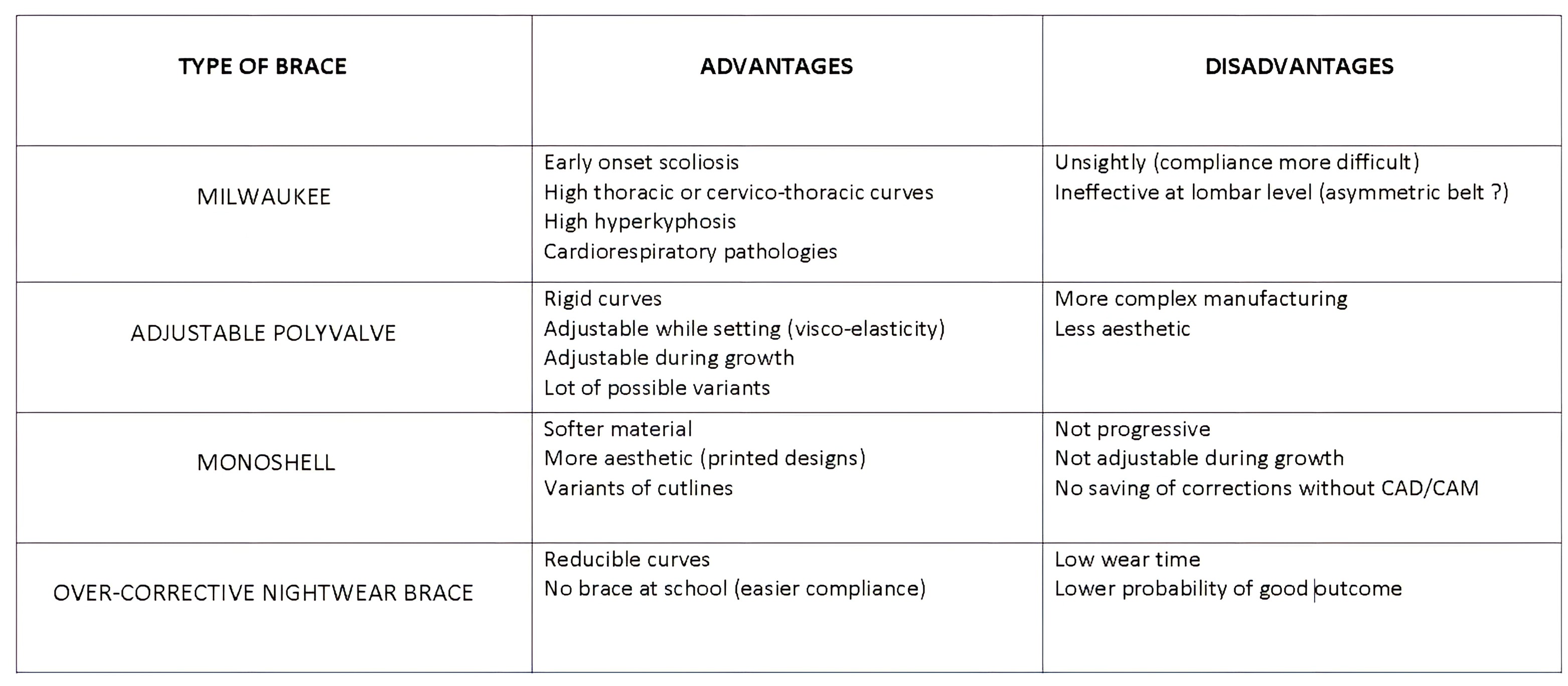
The Evidence Based Medicine leaves considerable room for practitioner’s experience.
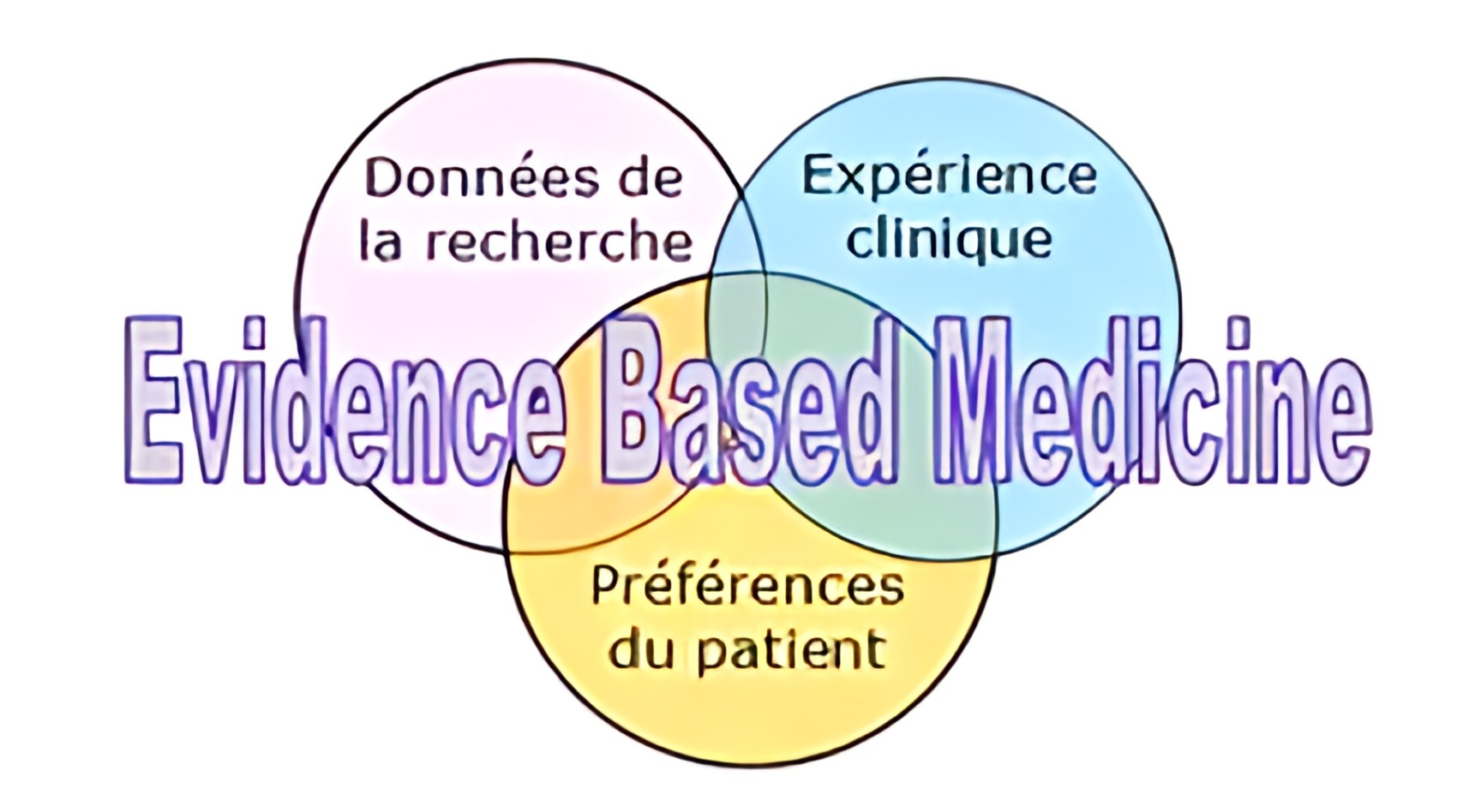
Once he masters this wide range of possibilities, the practicioner-expert can design and realise braces « à la carte », like a mosaïc. The aim is to propose to each patient the best brace for their case, whatever its name (Brace « with no name ») .
This review is not complete, it is the foundation for future reflections and work. It is the CPO’s « point of view ». Teaching and passing on the experience remain the fundamental challenge.
The scientific approach (SOSORT) is precious and essential. The clinical practice is paramount.
An ethical and regulatory approach is necessary and still needs to be done.
7. REFERENCES, BIBLIOGRAPHY :
F. Zaïna, JC. De Mauroy, T.Grivas, MT. Hresko, T. Kotwicki, T. Maruyama, N. Price, M. Rigo, L. Stikeleather, J. Wynne, S. Negrini; Bracing for scoliosis in 2014: state of the art
Weiss HR, Negrini S, Rigo M, Kotwicki T, Hawes MC, Grivas TB, Maruyama T, Landauer F: Indications for conservative management of scoliosis (guidelines).¨Scoliosis 1:5, 2006
Scoliose Idiopathique, J.Bérard et R.Kohler, 1999, Sauramps médical. Volkmann E., Hueter K., Chirurg. 1932; 4 (20): 811-815 Weinstein SL., Dolan L., Wright JG., Dobbs MB.,
N.Eng.J.Med.2013 Oct.17; 369(16):1512-21
Cotrel Y., Morel G., La technique de l’EDF dans la correction des scolioses. Rev. Chir. Orthop. 1964; 50: 59-75
Blount WP., Moe JH. The Milwaukee brace, Baltimore: The Williams and Wilkins Company; 1980
Stagnara P., Le corset orthopédique lyonnais. Les déformations du rachis : scolioses, cyphoses, lordoses. Masson éd., Paris 1984
Michel CR., Allegre G., Caton J., Les orthèses rachidiennes à 3 et 4 valves dans le traitement orthopédique des scolioses. Cah. Kinésith. 1984 ; 106 : 7-13
Mouilleseaux B., Pallandre B., Picault C., Diana G., Corset toilé de Saint-Etienne pour le traitement précoce de la scoliose lombaire. Ann. Réadapt. Med. Phys., 1984; 26
The Conservative Scoliosis Treatment, 1st SOSORT Instructional Course Lectures Book, T.H. Grivas, IOS Press, 2008
Coillard C. et al., Spinecor, Eur. Spine J. 2003 ;12 : 141-148 Mouilleseaux B., Courtois I., Ebermeyer E. et al. Le corset
3D, RER 2002 ;10(32) :1283-6
Duval-Beaupère G., Historique de l’orthèse du tronc paralytique. Cahiers de l’AFA 1981 ; 229-80
Pous JG., Guibal C., Le corset plastique total contact ou Body-Jacket de Wilmington. Rachis et Appareillage, Springer-Verlag, Paris, Berlin, Heidelberg, New-York, 1992
Griffet J., Thevenot J., Barral F., Les orthèses GTB dans le traitement en hyperlordose lombaire… Ann. Read. et Med. Phys. 39(1996) :117-122.
Chêneau J. L’orthèse de tronc dit « de Munster », Annales de Kinésithérapie 1982 ; 9 : 207-13
Watts HG., Hall JE., Stanish W., The Boston Brace System for the treatment of low thoracic and lumbar scoliosis by the use of a girdle without superstructure. Clin. Orthop. 1977; 126: 97-92
Gepstein R., Leitner Y., Zohar E., Angel I., Shabat S., Pekarsky I. et al. Effectiveness of the Charleston bending brace in the treatment of single curve idiopathic scoliosis. J Pediatr. Orthopedic 2002; 22: 84-7
Pierrard G., Jambou S., Bronfen C., Menguy F., Mallet JF., Treatment of Idiopathic Scoliosis in a C.A.E.N. brace…, Ann. Orthop. Ouest 2003-35-201à208.
Bernard JC., Boussard D., Lecante C., Evolution du traitement orthopédique lyonnais, IX° Congrès ISPO, Lyon 2004.
Bernard JC., Jemni S., Schneider M. et al., Evaluation du résultat d’un CMCR…, Ann. Read. et Med. Phys. 48,9 Déc.2005, 637-649.
De Mauroy JC., Pourret S., The new Lyon Brace (ARTBrace). New concepts…, Scoliosis 2014-9(1) : 056.